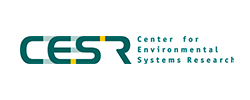To comprehensively assess the environmental impacts of the construction and operation of plants and anthropogenic processes – including prior to project start and remote impacts – the environmental impact assessment has been expanded into an environmental sustainability assessment (ESA).
Sustainable technologies in electricity production often focus on reducing the carbon footprint, while other adverse effects on the environment are not always taken into account. It has been shown that a comprehensive assessment of environmental impacts in different categories is necessary in order to assess the sustainability of various technologies. The environmental impact assessment required in Germany for the evaluation of planned construction measures covers a wide range of environmental impacts, but also has weak points: the procedure can only be used meaningfully before the start of the project or measure, does not record any remote effects from upstream supply chains, and is purely verbal-argumentative. As a result, it does not establish comparability between different projects. It is possible to close this gap using selected life cycle assessment indicators – the material, water, land, climate and energy footprint, as well as indicators for the consideration of human health and ecosystem services, can be used at every phase and include the entire supply chain of a plant. In the presented concept, these indicators are supplemented by descriptive elements so that experts in life cycle assessment analyses and users of the environmental impact assessment can achieve the most comprehensive possible assessment. In this way, the environmental sustainability assessment represents an interface between science-based sustainability indicators and practical applications.



